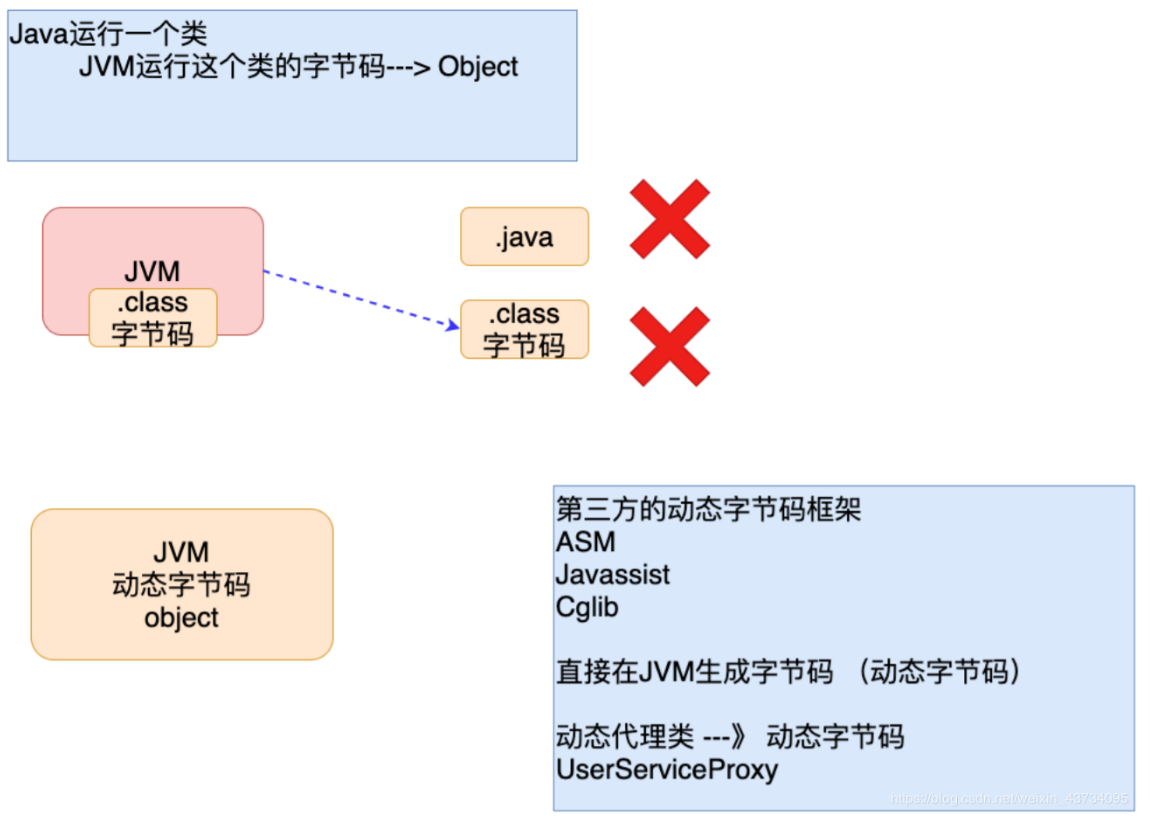Spring动态代理的概念
概念:通过代理类为原始类(目标类)增加额外功能
好处:利于原始类(目标类)的维护
spring动态代理开发步骤
1、引入相关的jar包
<dependency>
<groupId>org.springframework</groupId>
<artifactId>spring-aop</artifactId>
<version>5.1.14.RELEASE</version>
</dependency>
<dependency>
<groupId>org.aspectj</groupId>
<artifactId>aspectjrt</artifactId>
<version>1.8.8</version>
</dependency>
<dependency>
<groupId>org.aspectj</groupId>
<artifactId>aspectjweaver</artifactId>
<version>1.8.3</version>
</dependency>
2、创建原始对象(并在配置文件中设置)
// 接口
public interface UserService {
void register(User user);
boolean login(String name, String password);
}
// 接口的实现
public class UserServiceImpl implements UserService {
@Override
public void register(User user) {
System.out.println("UserServiceImpl.register 业务运算 + DAO");
}
@Override
public boolean login(String name, String password) {
System.out.println("UserServiceImpl.login 业务运算 + DAO");
return true;
}
}
// xml的配置文件
<bean id="userService" class="com.bearjun.proxy.UserService" />
3、额外功能(MethodBeforeAdvance接口)
额外的功能写在该接口的实现中,在方式方法执行前执行接口中的方法。
//把运行原始方法执行前的运行的额外功能,书写在before方法中
public class Before implements MethodBeforeAdvice {
/**
* 作用: 把需要运行在原始方法执行之前运行的额外功能, 书写在 before 方法中
*/
@Override
public void before(Method method, Object[] objects, Object o) throws Throwable {
System.out.println("hhhhh");
}
}
// 配置额外功能
<bean id="before" class="com.bearjun.aop.Before"/>
4、定义切入点
切入点:额外功能加入的位置
目的:根据自己的需求,决定额外功能加入给哪个原始方法
<!--⽬的: 由程序员根据⾃⼰的需要,决定额外功能加入给哪个原始方法(register、login)-->
<!-- 简单的测试:所有方法都做为切入点,都加入额外的功能-->
<aop:config>
<aop:pointcut id="pc" expression="execution(* * (..))"/>
</aop:config>
5、组装(步骤3,4整合)
<beans xmlns="http://www.springframework.org/schema/beans"
xmlns:xsi="http://www.w3.org/2001/XMLSchema-instance"
xmlns:aop="http://www.springframework.org/schema/aop"
xsi:schemaLocation="http://www.springframework.org/schema/beans
http://www.springframework.org/schema/beans/spring-beans.xsd
http://www.springframework.org/schema/aop
https://www.springframework.org/schema/aop/spring-aop.xsd">
<bean id="userService" class="com.yusael.aop.UserServiceImpl"/>
<!-- 额外功能 -->
<bean id="before" class="com.yusael.aop.Before"/>
<aop:config>
<aop:pointcut id="pc" expression="execution(* * (..))"/>
<!--表达的含义: 所有的方法 都加入before的额外功能-->
<aop:advisor advice-ref="before" pointcut-ref="pc"/>
</aop:config>
</beans>
调用测试
/**
* 用于测试动态代理
*/
@Test
public void test1() {
ClassPathXmlApplicationContext ctx = new ClassPathXmlApplicationContext("/applicationContext.xml");
UserService userService = (UserService) ctx.getBean("userService");
userService.login("admin", "1234");
userService.register(new User());
}
注意:
- Spring 的工厂通过原始对象的 id 值获得的是代理对象
- 获得代理对象后,可以通过声明接口类型,进行对象的存储
动态代理细节分析
1、Spring创建的动态代理类在哪里?
Spring框架在运行时,通过动态字节码技术,在JVM创建的,运行在JVM内部,等程序结束后,会和虚拟机一起消失。
什么是动态字节码技术:通过第三方动态字节码框架,在虚拟机中创建对应类的字节码,进而创建对象,当虚拟机结束,动态字节码跟着消失。

**结论:**动态代理不需要创建类文件,都是Jvm在运行过程中创建的,所以不会造成静态代理类文件数量过多,影响项目管理问题。
2、动态代理模式简化代理的开发
在额外功能不改变的前提下,创建其他目标类(原始类)的代理对象时,只需要指定原始(目标)对象即可。
3、动态代理额外功能的维护性大大增强
打开扩展,关闭修改(开闭原则)




评论区